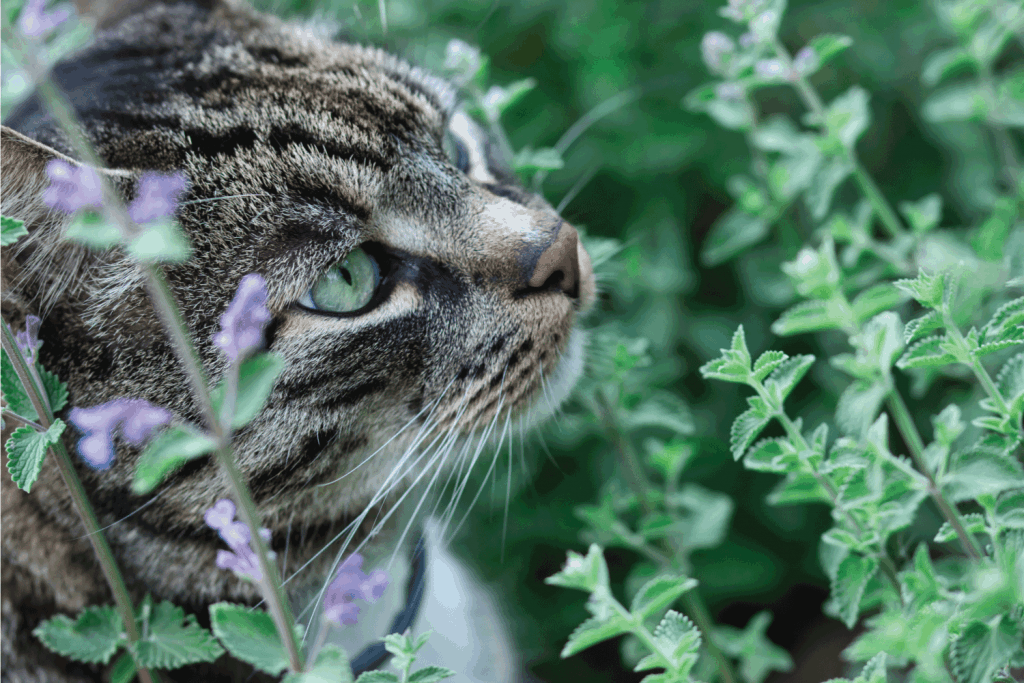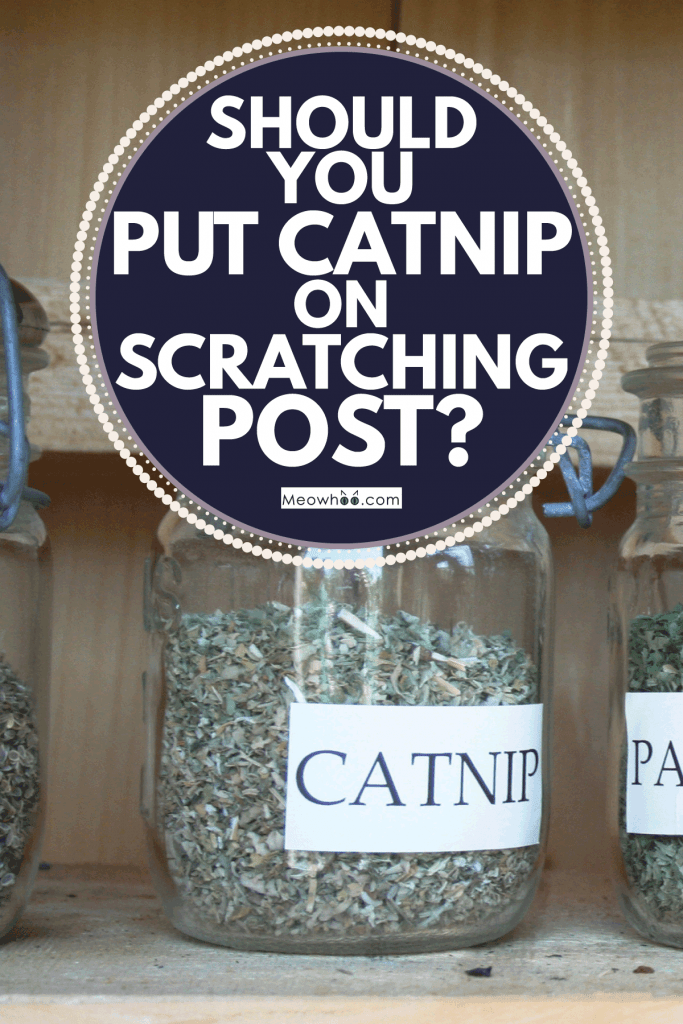Are you tired of your beloved cat turning your precious furniture into a scratching playground? This begs the question: how do you divert their attention? Should you put catnip on a scratching post? This may be your secret weapon.
In this article, we dive into the science behind this cat-enticing plant and how you can use it to save your furniture. We will share expert tips on how to apply catnip on a scratching post, and more importantly, answer the burning question: does it actually work?
Why Your Couch Is A Cat's Scratch Haven - And How To Redirect Them
Cats scratch to mark their territories. The animals’ bodies secrete special substances that produce unique smells. This act is like dogs urinating in specific areas.
However, some cats like to drag their claws on things like furniture and walls but not their scratching posts. So should you put catnip on a scratching post so your cat uses that instead of scratching on other household items? Here’s what the experts have to say based on our research.
Yes, you should put catnip on your cat’s scratching post. That way, the irresistible chemical compound in the plant will attract your pet, ensuring that the feline scratches the post instead of other objects. You also have different options for this technique to work, such as using catnip sprays and toys.
Next, we'll talk about how to put catnip on your cat’s scratching post. Additionally, you’ll find other useful and relevant information about catnips, scratching posts, and cats’ scratching behaviors.
How To Put Catnip On A Scratching Post?
Catnip should be effective on most cats. On the other hand, kittens can express little to no interest in this herb.
If you have an adult cat, here are ways to help you put catnip on a scratching post:
Application #1: Use Catnip Spray
Yes, you can buy catnip spray for your cat. It's a convenient product to give to your pet without the worry of the animal spreading the plant's leaves everywhere.
Additionally, catnip spray is a great way to bring comfort to cats without the risks of overdose. Although catnip overdose is rare, your feline can still become desensitized from the chemical, rendering the product useless over time.
Use the catnip spray as a reward when your cat is scratching their post. First, put a small amount of spray on the scratching post.
Then, wait for your feline to put their claws onto the post. Add another small amount of catnip spray to train your pet to scratch on the post.
How Often Can I Use Catnip Spray?
According to a 2017 study from the City University of New York (CUNY), cats generally stop their obsession with catnip after three minutes of play.
Cats may consume more than the average amount of catnip for extended periods. But mild adverse effects can appear, such as headaches, nausea, and vomiting. Therefore, it's best to limit your feline's catnip spray use to a few minutes at best.
Application #2: Hang The Catnip
Put loose-leaf catnip in a small bag and hang it at the top of the scratching post. This technique works best if the scratching post has a considerable height.
Your cat will attempt to climb to reach the bag, training your pet in the process to use the post. However, if the bag isn’t durable, your cat might claw it open, releasing the catnip on your floor and making a mess.
Aside from using catnip bags, you can also hang catnip toys. But you need to keep a watchful eye on your pet while playing. If you can, take the toy away after a few minutes of playtime.
Otherwise, your pet will get tired of the toy, making it increasingly difficult to lure the animal with it over time.
Application #3: Sprinkle Catnip On The Post
Put a dash of loose-leaf catnip on your pet's scratching post. Make sure not to concentrate the application on one area.
Instead, rub the plant’s leaves as loosely as possible on the post. That way, your feline won’t be picky in using the post to scratch.
Also, don't make your cat smell catnip every day. Instead, use the plant's alluring scent once every week or so. You can also space the consumption to once every two weeks.
Limiting your pet's exposure to catnip during these periods ensures that the animal will always be looking forward to this special time.

Is Catnip On Scratching Post Good For Cats?
According to a book entitled It’s a Cat’s World … You Just Live in It by Dr. Justine Lee, DVM, some of the reasons cats scratch consist of the following:
- To claim their territories
- To dig into furniture, allowing them to stretch their muscles
- To exercise and prime them for hunting
- To wear down their claws or nails
Therefore, cats can scratch things in your home that they believe to be the most helpful in letting them achieve these objectives.
Thus, your felines can ignore scratching posts because they think scratching other objects can help them better at achieving the goals mentioned above.
Putting catnip on a scratching post will help in ensuring you don’t come home to scratched furniture.
The chemical compound in the plant will attract your pets, diverting their attention to the post instead of other household objects.

What Does Catnip Do To Cats?
Catnip is a plant belonging to the mint family. This leafy green plant releases a chemical compound known as nepetalactone that's irresistible to felines.
It produces a range of effects on cats from turning them into furry couch potatoes to making them into balls of pure energy.
According to a 1962 study, cats respond to catnip through four major acts, which include:
- Smelling
- Cheek and chin rubbing
- Chewing, licking, and head shaking
- Head rolling and body rubbing
Cats begin to show signs of unfamiliar behavior upon smelling catnip. Stretching, leaping, and sometimes even sexual stimulation can occur. As it stands, the exact mechanism responsible for this effect in cats is still unknown.
However, some believe that nepetalactone triggers sensory neurons that activate the animal’s pleasure center. In turn, the cat that smelled the catnip will experience euphoric-like behaviors.
Why Won't My Cat Scratch The Scratching Post?
Your cat won’t scratch on a scratching post because of different reasons. First, the feline doesn’t find the post attractive.
Cats can be picky creatures and won’t touch things that they don’t find eye-catchy. Some cats won’t even touch canned wet cat food if it’s not visually appealing.
Another reason why your cat isn't using the scratching post is that the post feels flimsy. Take note that the post should be both heavy and solid.
If the tool wobbles or easily deforms from one scratching session, your cat will leave it alone.
What Kind Of Scratching Post Is Best?
An online survey by Colleen Wilson, DVM, et al researched how cats behave on different types of scratching posts. The scientists concluded that domestic felines prefer upright and vertical scratching posts of 3 feet or higher.
Additionally, the results showed that scratching posts wrapped with a rope-like material are more attractive to cats than other scratching post variants.
Where Should I Put A Scratching Post?
Leave the scratching post in places where cats love to hang out, such as high-traffic areas like the kitchen or living room.
You can also put this special cat scratching post near your pet’s sleeping area to make it accessible for them. Additionally, you can place the scratching post anywhere in your home that the animal finds comfortable.
Final Words
By now you should know that you can put catnip on your cat’s scratching post. This way, your pet will use the post to dig their claws into the sturdy material instead of scratching your furniture or walls.
Take note that you should maintain a watchful eye while your cat is consuming catnip. Otherwise, your pet will get bored over time, making it more difficult to entice the animal with the plant if you use it frequently.

Some elements on this page may have been created by our team using advanced AI to provide you with top-notch cat inspired ideas. Read more about our AI Content Policy.

Hey Justin, thanks for the catnip hack on the scratch post. I will definitely try this with my kitties. I already have too much damaged furniture due to cat scratching. Great article, thanks for sharing your ideas.